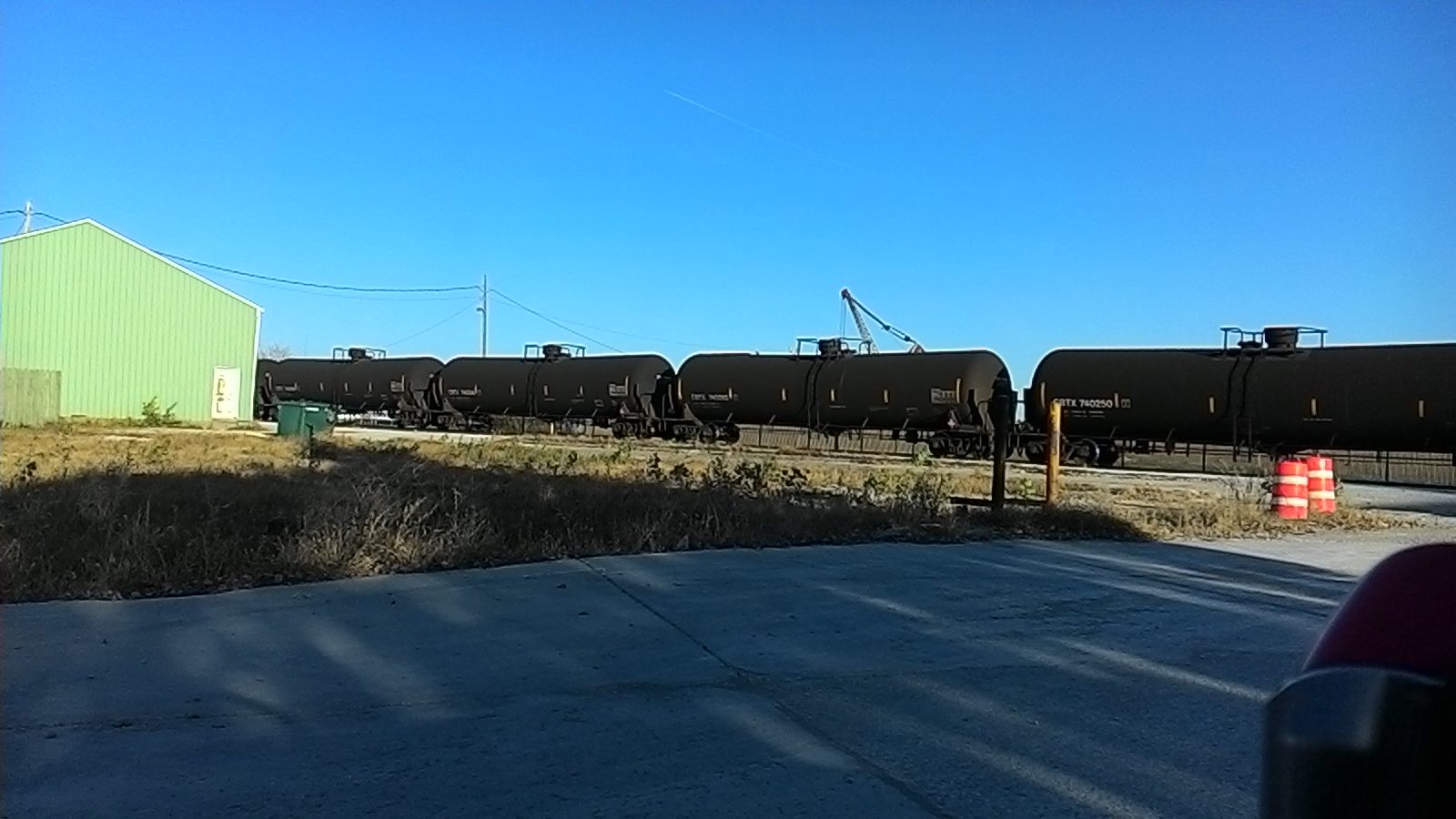Ed. note: this report will be supplemented

This picture was taken a couple weeks ago along River Drive near downtown Davenport. The train is heading south. There were at least fifty such rail tanker cars in this particular train. Barges laden with crude also make the trip down-river to the Gulf. Barges and trains with crude traveling on or adjacent to waterways. Modern pipelines have more robust safety provisions.
The Dakota Access Pipeline (DAP) is a construction project now well underway designed to bring “light sweet” crude oil from the Bakken Range in North Dakota diagonally through South Dakota, part of Nebraska, and dissecting Iowa on its way to existing lines in Pakota, Illinois. From there the crude will continue on to Gulf Coast refineries . The project will greatly reduce the cost of transporting the crude and accordingly facilitates our nation’s energy independence.
Opposition to it has come from elements of American Indian tribes that say the pipeline endangers reservation water supplies and transverses sacred grounds. They further charge that the construction violates the Ft. Laramie Treaty of 1851. They are joined if not mostly supported by environmentalists claiming all manner of adverse environmental impact. Protests have occurred in Iowa, including Davenport, although the DAP looks to be no closer than 110 miles.
Here are some considerations we think are important to balance the dominant local and national media’s presentation of the project and the protestors.
The protests are not free of violence even though all manner of legal processes have been afforded them. Millions of dollars of damage has been done to equipment. Extra law enforcement costs incurred by local governments and private security costs incurred by construction companies and other lawful citizens to deal with trespassing and arson extends into the millions of dollars.
The DAP follows for nearly all of its extent, existing pipe lines and right of ways including in the Dakotas. Construction meets strong federal regulatory requirements. The DAP is buried 36 inches or more in agricultural areas so that land is not taken out of production except during construction. Farmers are compensated according to law and contract.
Water sources are not endangered as environmental compliance is monitored. Again the DAP follows existing pipe lines for the most part, crossing the same waterways underneath.
The sacredness argument of opponents regarding the area transversed by the DAP seems suspect in that railroads and highways and pipelines seem to cross the same territory, and roads and railways were anticipated in the Ft Laramie treaty.
The claim of the reservation Indians protesting the pipeline project to speak for all signatories to the treaty is also suspect as many tribes were involved. Legal standing does seem to be in question.
That the protests take place here is also strange as no Iowa or Illinois territory was involved in the treaty, both were already states and not territories as were the Dakotas and Wyoming at the time.
Hard core environmentalist involvement in the obstruction seems less serious about the safety of transport of the oil and more about tactics to drive up the costs of Bakken crude and crude oil in general. Consider the veritaspac.com picture shown when reflecting on safety concerns of pipelines to waterways.
R Mall

Photo inverted.
Stand on your head and it looks fine